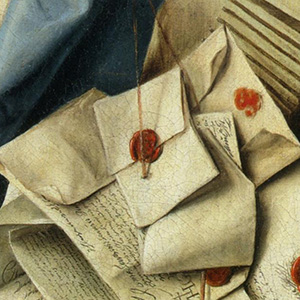An Envelope for Email
Letters sealed with wax like in this painting by Cornelis Norbertus Gysbrechts are quite rare today.
But the classic paper letter has now also been replaced by email. What very few people are aware of, however, is that the majority of today's emails are sent without the "protective envelope" that is still common with paper letters, and are therefore more like a modern postcard.
A remedy in the form of secure encryption has been available for many years, but is rarely used for email because of its complexity.
We asked ourselves the question: How can the users of webmail protect their communication adequately?
The answer is Mailvelope!
